Console cartridges as modems
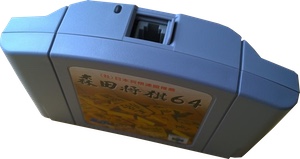
Many modern video game players take online connections for granted - and the truth is, online services have been a standard feature of consoles for almost fifteen years. 1 However, even before the penetration of the Internet became ubiquitous, there were cartridges that allowed players to use advanced technologies and look to the future.
With this article we will close the cycle of posts about unusual cartridges. In it, we will look at several cartridges that provide connectivity for consoles isolated from the outside world. As usual, it will not be an exhaustive list of all existing technologies, but a brief overview of the most remarkable or interesting devices.
Previous articles in the series: “The Story of Three Cartridges” , “Systems Inside Cartridges: How Engineers Expanded Gaming Consoles” , “Universality of Cartridges: Sensors in Games for Game Boy” .
XBAND
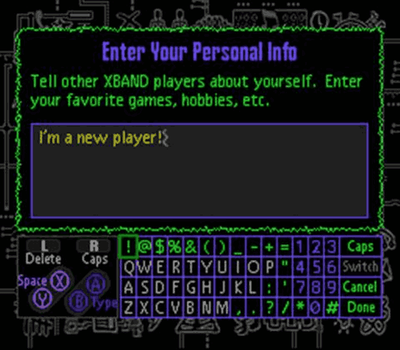
Screenshot of registering a new user XBAND
')
Since the advent of video games, one of the most attractive features of this type of entertainment has been the competition between players. Despite the fact that the fantastic graphics of games like Street Fighter II took the light years ahead of the simple Pong figures, they all had a competitive spirit. These competitions have always been face-to-face, but in the early 90s, a small group of former Apple engineers realized that the networking technology — modems — that is gaining popularity among home users, has the potential to make a revolution in video games. They created a company called Catapult Entertainment and began working on XBAND, a low-cost modem built into the intermediate cartridge, as well as an online service with which he could communicate. The XBAND service was supposed to allow players to play video games with standard cartridges against other players, regardless of their physical location. It was quite an amazing event, especially given the relatively small size of the company and the fact that it was a third-party developer and not a manufacturer of consoles or games.
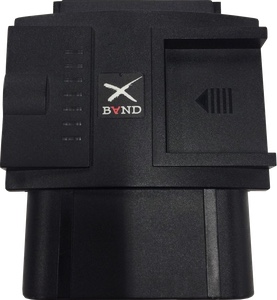
Version for Sega Genesis
The first XBAND model was released for the Sega Genesis at the end of 1994, and the Super NES version appeared next summer. Despite the fact that these two consoles were completely different in terms of hardware and software, the XBAND modems for them were almost the same: they were installed between consoles and game cartridges (like the Game Genie) and gave players seemingly magical possibilities (again, like Game Genie). Gamers simply connected the phone line to the XBAND cartridge and started to play ... after paying a monthly subscription to the service, of course. Only a small fraction of the games on each of the systems was compatible with XBAND, but they all gave users something special — the ability to participate in online battles with automatic search for opponents right from their living room.
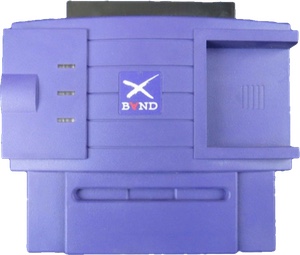
Super NES version
XBAND was released at a crossroads: people at that moment already realized that connecting to the network would become an important part of everyday life in the future, but it was not yet clear that the Internet would become the main way of communication. Catapult Entertainment managed to attract fifteen thousand subscribers to the XBAND service, but they were not enough to keep the company afloat. Ambitious plans to create future versions of the device for other platforms, including the PC and Sega Saturn, were not destined to be realized. The network ceased to operate in April 1997, less than three years after the release of the first model.
Despite the lack of long-term success, XBAND is hardly a failure. A small team foresaw the future and created a system with the selection of opponents online, news and email almost a decade before the launch of Xbox Live or PlayStation Network. Simply put, in retrospect, their achievement seems overwhelming.
Channel Wrestling with Gaming recently released a watch documentary about XBAND , in which there are detailed interviews with the developers of the device. This is an impressive example of documentary, especially given the fact that almost all the work was done by one person. I highly recommend this film to anyone interested in such things.
Sega channel

Sega Channel Games Screenshot
A few years before people started using coaxial cables for high-speed Internet access, the Sega Channel proved that these cables are applicable not only to television. After testing at a dozen US markets 2 at the end of 1993, the official debut of the Sega Channel took place in December 1994, and during 1995-96 the network was deployed in the United States and Canada 3 .
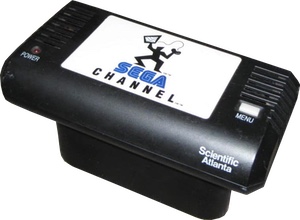
Sega channel cartridge
Sega Channel consisted of a special cartridge with a coaxial connector at the back and an online service that offered a monthly updated list of downloaded games. Players just had to register with the Sega Channel service and connect a regular coaxial cable to the back of the cartridge. After that, they could get down to business: in the Sega Channel service there was a news feed with information about games and new releases, as well as a constantly changing list of games downloaded without additional payment. Although most of the games were simply downloadable versions of regular games for Genesis, the service also became the home of many projects exclusive to the US market, including the rather deficient Genesis port of the first three Mega Man games with NES called The Wily Wars .

Unfortunately, for various reasons, the Sega Channel has not received much popularity. First, the infrastructure of the first cable service providers was not designed for such use: minor electrical interference, which manifested itself in a television signal as a barely noticeable noise or color change, could completely “break” the Sega Channel. To provide reliable service, it was necessary to eliminate noise and interference on all sections of the path from the cable company equipment to the end-user homes, which was quite a challenge for such a niche service. In addition, the main target audience of the service were children and adolescents, and for them the price of services was quite high: $ 15 a month in 1994 (approximately $ 25 in 2019). Ultimately, the limited list of cities in which the service was offered could not attract enough subscribers to maintain the service.
Sega Channel was one of the first examples of digital services delivered over traditional analog cable networks, but later these services became more - the foundation laid by cable service providers for Sega Channel prepared the scene for ubiquitous cable modems that captured the Internet services market in early 2000 -h.
Morita Shogi 64
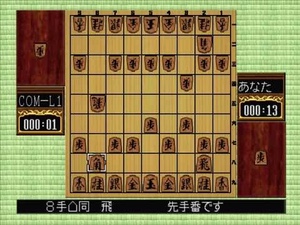
The Shogi Japanese Strategy Board Game is a distant relative of chess with a long and surprising history. 4 . Despite its popularity in Japan (it is even more popular than chess familiar to Western people), shogi is virtually unknown to the rest of the world. In particular, there are versions of shogi for almost every console, but Morita Shogi 64 for Nintendo 64 is something special.

Surprise! There is an RJ-11 phone jack on the top of the cartridge.
Looking at the cartridge, you can reveal its secret: there is a telephone cable connector at the top, making this cartridge the only game for Nintendo 64 with an integrated modem for online games that does not require additional equipment. Despite the fact that Morita Shogi 64 was sold only in the Japanese market, it managed to attract the attention of Western gaming media. “It is unlikely that this game will reach the United States,” the Electronic Gaming Monthly reported in January 1997 (inadvertently disappointing its Canadian readers). “But the new cartridge design poses an interesting question: can Nintendo adapt this plug-and-play system to other N64 games?”
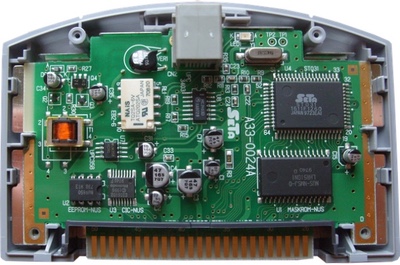
This special cartridge consists of a telephone RJ-11 connector (in the middle at the top) and a pile of additional electrical circuitry.
The answer was a firm “no”, but Nintendo eventually released a separate cartridge modem, designed for the Nintendo 64 Disk Drive on the Japanese market and its online service Randnet 5 .
Unfortunately, shogi lovers from the 21st century, Morita Shogi 64 worked through a gaming Internet service, rather than direct telephone connections between players, and this online service is no longer functioning 6 . This means that even if you manage to find another shogi fan who also has a Nintendo 64 cartridge and a landline phone, you will not be able to play with each other. Alas!
Almost famous
These three cartridges are not the only examples of existing cartridges for data transmission, but when viewed in general, they provide a very interesting picture of the historical development.
As in many other areas of life, incomplete victories are often more interesting than serious successes. XBAND almost succeeded in creating a viable third-party cross-platform gaming network, which will never happen again 7 . Sega Channel almost realized digital content download a decade before it became mainstream 8 , while proving that game subscriptions are a very promising business model for video games. Morita Shogi 64 almost began the era of smart cartridges with built-in communication features.
This concludes our review of the amazing versatility of the modest game cartridges. Next month we will look at examples of the forgotten art of technology concept videos.
Notes
- Microsoft was the first to launch Xbox Live in November 2002. He was followed in November 2005 by the Nintendo Wi-Fi Connection , and in November 2006 by the Sony PlayStation Network . Probably all three were launched in November because the owners were trying to catch up to the holiday season .
- Initial testing covered 5,000 consumers in twelve US test markets and began in April 1994. It was so successful that at the end of November, Sega released a triumphal press release .
- The launch of the Sega Channel in the USA and Canada is documented in some detail , but there is not much detailed information about other countries.
- Shogi and chess are part of a single family of games whose roots go back to the beginning of the Middle Ages. Their original origin is unknown, but most scientists assume that they appeared in India. I recommend exploring a fascinating Wikipedia article about the history of chess.
- Randnet is a short-lived online service available only in Japan. He worked for only fourteen months, Randnet provided basic Internet access services, including e-mail, live chat, online games, and the Nintendo newsletter. The name Randnet is an abbreviated acronym for Recruit and Nintendo Net work: Recruit is the name of the media company that Nintendo has teamed up with to create the service.
- Despite active searches, I could not find the exact date of the service termination. If anyone knows when it was completed, then I would like to hear about it.
- The closest analogue today is various social systems that were added to some Android and iOS applications before integrating similar functions into platforms ( Game Center on iOS in 2010 and Google Play Games on Android in 2013). The most famous for most people is likely to be OpenFeint . But even they are not complete analogs, because the main idea of XBAND was that Catapult Games had to force XBAND to work with games created and released by third-party companies without their support and permission.
- In the area of downloadable games, Microsoft is far ahead of Sony and Nintendo: Xbox Live Arcade was launched in May 2004. Sony and Nintendo are two years behind: PlayStation Store was launched in November 2006, and the Wii Shop Channel in December 2006.
Additional reading
- XBAND Video Game Modem on Super Nintendo Memories
- Sega Channel History on Tedium
- Rare Video Game Hunting: Sega Channel, Solar Panel for Game Boy, etc.
- Looking Back on Sega Channel
- SharkWire Online is an unofficial online service for Nintendo 64, launched by the developers of the GameShark cheat device.
- N64 Games And Hardware You Didn't Know About
- Before There Was 64DD There Was Morita Shogi 64!
- Wikipedia: the history of shogi
- Wikipedia: the history of chess
- 64DD Wikia: Randnet
- Wrestling With Gaming - The Story of XBAND
Source: https://habr.com/ru/post/458900/
All Articles